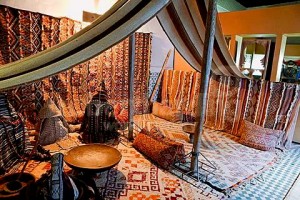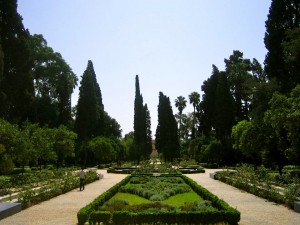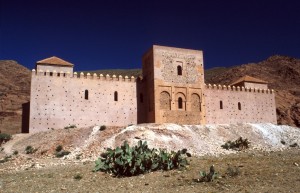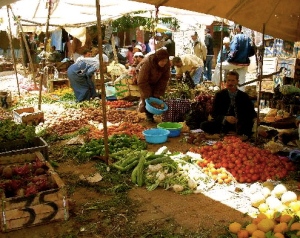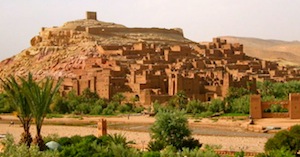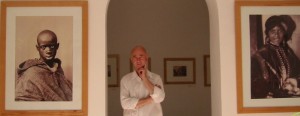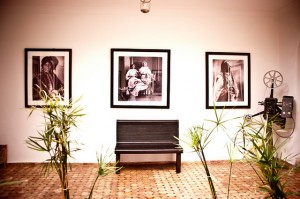Archive for October, 2012
For an introduction into design and textiles one can do no better than visit the Tiskwin museum which is near the Dar Si Said in Marrakech. For a first foray into carpets and kelims there are cooperatives such as L’Ensmble des Artisans on Avenue Mohammed V in Marrakech to get…
The Medina Gardens of Fes make for the perfect Fes Tour to compliment this UNESCO World Heritage Site’s ancient Mosques, Monuments and Zaouias. The Bab Bou Jeloud is the main entry point to Fes el Bali. This area divided the cities of Fes Jedid and Fes el Bali and was developed into three palace gardens by…
Abderrahman Slaoui was a businessman who loved the arts. Newly opened this past May 2012 is Abderrahman Slaoui’s Foundation Museum located in Casablanca. The Musee De La Fondation Abderrahman Sloaoui is set up in the home of a charming art deco building dating from the 1940’s. Casablanca’s Musee De La Fondation…
Tin Mal is 100 kms from Marrakech just past the village of Ijoukak on the road to Taroudant in the High Atlas Mountains. It was the spiritual home of the Almohads, who went on to conquer Marrakech defeating the ruling Almoravids and then creating an empire that stretched from all…
Many visitors to Marrakech also enjoy excursions into the nearby countryside to experience the life of the surrounding Berber villages and towns and the communities in the Atlas Mountains. After the excitement of the souks in Marrakech and the hub bub of the city the silence and the beauty of the countryside…
Ouarzazate has always been a cultural meeting place and melting pot for the various peoples of the North and South for trade and cultural exchanges. Merchants settled in the city of Ouarzazate and excavations have found gold and precious metals. The town thrived on the Saharan camel trade routes coming…
Celebrate New Years in Morocco’s Sahara Desert with the trip of a lifetime. Sahara Desert New Years Tours in Morocco are the perfect way to discover the Deep South’s Berber Villages, the Skoura palmeraie and its Valley of one-thousand kasbahs, UNESCO World Heritage Site Ait Benhaddou, the Dades Valley and…
A treasure house of Berber culture created by Patrick Man’ach and Hamid Megrani is the Berber Ecomuseum also referred to as Le Musée Berbère. The Berber Ecomuseum, Douar Tafza is located 37 km. from Marrakech just before the Ourika valley. The Berber Ecomuseum is in an old village casbah. The…
No visit to Marrakech is complete without a visit to La Maison de la Photographie which is close to the Medersa Ben Youssef. Just pass by the door of the Medersa and through the arch across the street and follow the road round passing on your way restaurant Foundak (an…

